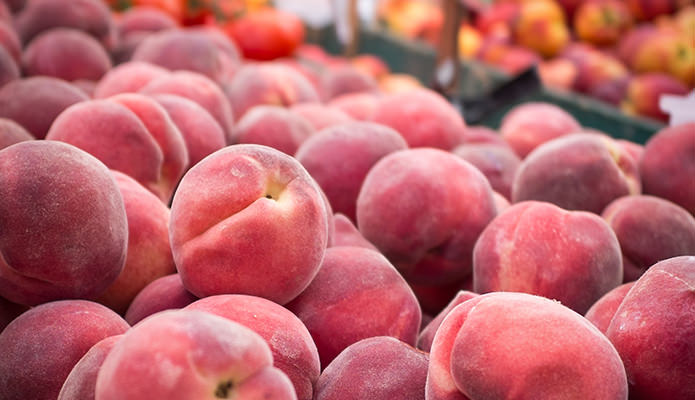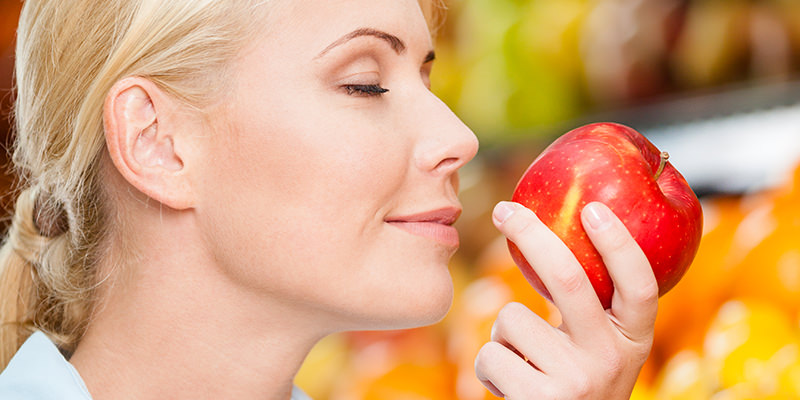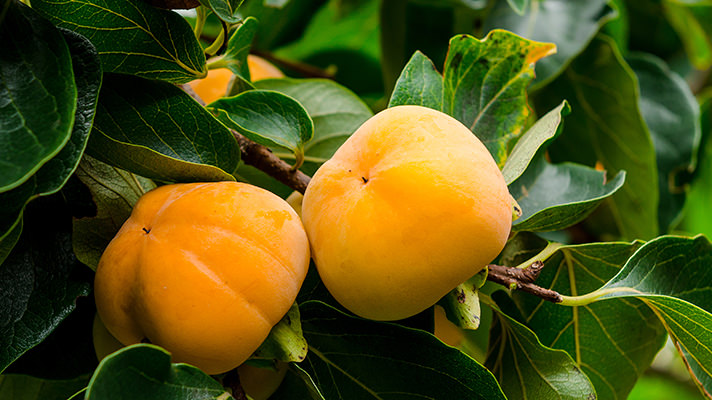Given the arcane collection of adjectives used in wine descriptions, it’s not surprising that the wine industry has a reputation for being snobby and pompous. (Bruised stone fruit and dried Meyer Lemon, anyone?) What the wine aristocracy doesn’t want you to know is it only takes a trip through the produce department to begin discovering the subtle aromatic differences between bruised and ripe golden apple, or Kaffir lime and regular lime.
It’s helpful to remember that the sommeliers, marketers, and PR mavens of the wine biz have different motives when selecting and describing bottles. Professionals are searching for wines without technical flaws, like cork taint, and varietal character, which comes with its own set of oft-obscure adjectives like dried lychee, white pepper, or petrol.
These professionals develop their noses and palates to identify the aromatic minutiae of wine through years of practice. In essence, their palates are refined by creating sensory connections through repeated exposure to flavors and aromas. They’ve got a huge memory bank full of smells. Essentially, each time you smell an orange or pear your brain creates a connection to its specific aroma, and stores that connection deep in the brain. Eventually, Bosch pears and nectarines have as strong a mental reaction as smell of sizzling bacon or chocolate chip cookies. Like florists being sensitive to the smell of lilies, and New Yorkers to the rotting garbage/body odor aromatics of the subway, wine professionals are to the details of fruit and wine aromas.
Luckily, you don’t need to quit your day job to develop the sensory connections of a sommelier. All you need is a grocery store. The local produce department not only provides the huge variety of fruits often used as wine descriptors, but touching and smelling is encouraged and expected. Conveniently, most grocery stores also group their produce the same way wine professionals mentally organize aromas. In short, there are four categories of fruit: citrus, stone, orchard, and berry.
Citrus Fruit

Citrus fruits are common descriptors in tasting notes for white wines, especially Riesling, Pinot Grigio, and Sauvignon Blanc. To develop citrus skills, start by grabbing a lemon and an orange, and scratch a small section of each. Notice how agitating the skin and squeezing the fruit releases intense aromatics. Notice how ripe, in-season oranges smell intensely sweet, and make your mouth water. Notice how lemons are quite mild on the nose, and how grapefruits often smell unpleasant. Notice also that you should not have started this experiment hungry.
Take the citrus enterprise further by slicing oranges, lemons, limes, and grapefruit and comparing the smells of the pith and flesh. Note: Don’t take your knife out in the store.
Stone Fruit

Stone fruit is the source of much confusion, but it’s simply anything with a hard pit, like a peach, plum, or apricot. Start with the same scratch-and-sniff exploration of the grocery store fruit displays. Also look for sad, bruised examples of peaches and plums. Notice that bruised fruit has a wildly different aromatic profile than ripe fruit. Notice that it almost smells rotten or cooked. Notice the small child nearby who is now enthusiastically smelling all of the lettuce.
While not always pleasant, bruised and even rotten fruit aromas are common in wines like Chardonnay and aged reds, while ripe stone fruit is a traditional characteristic of wines like Albariño and Cabernet Sauvignon.
At home, investigate stone fruit more deeply by comparing canned peaches with their fresh counterparts, or dried apricots to fresh, juicy ones.
Orchard Fruit
For wine purposes, “orchard” fruit is limited to apples and pears, which display enough diversity even in a bodega to rival all the other fruit categories combined. Apple and pear scents are common in most white wines, but especially Chardonnays, sweet Rieslings, and Viogniers.
Again, start with a quick scratch and sniff. Notice that underripe apples really don’t smell like much. Notice that the really bruised apples smell more like applesauce. Notice that a Granny Smith Apple makes your mouth water furiously compared to a Red Delicious. Notice that the produce guy is very concerned about your apple smelling. Move on to pears, and repeat the process.
Like with stone fruit, try taking home some canned pears or applesauce and smell those too. Feeling silly at this point is totally normal, and actually beneficial for creating a smell memory bank–the more memorable the experience of learning new smells, the more your brain remembers those aromas, and the more sensitive it is to noticing them in wine.
Berry Fruit

Berry fruits are the most common descriptors in iconic red wines like Pinot Noir, Tempranillo, Sangiovese, and Cabernet. This fruit family includes everything from strawberries to cherries, and obscure red currants.
Please do not bring the scratch-and-sniff method to the berry section. Not only will this result in sticky hands, it may involve being forcibly removed from the store. Here, a quick smell will do. Look for berry containers with squished and ripe berries inside. Notice the bright, fresh, delicious smells of local berries. Notice the difference between raspberries and blackberries. Notice the subdued aromatics of strawberries from Chile in December.
At home, smell a can of blueberry or cherry pie filling alongside a handful of dried cranberries. Notice how dried cranberries taste great mixed with pie filling.
The more smelling, tasting, and drinking you do, the faster you will develop sensory connections and the ability to recognize familiar aromas in new places like wine, or even baked goods. Variety matters too, so don’t be afraid to squeeze the star fruits that appear on shelves in December, or to tear a basil leaf off the plants for sale and give it a good sniff.
Finally, scratch the foil off of a good bottle of wine, sniff deeply, and enjoy.


